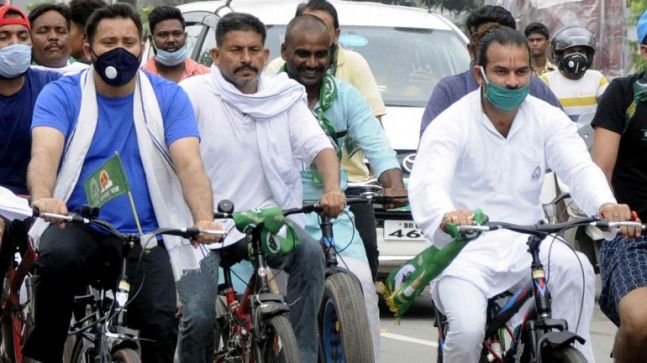Amitabh Srivastava, Patna: On June 25, as Tej Pratap and Tejashwi Yadav symbolically dragged a tractor on Patna’s roads, Lalu Prasad’s younger son Tejashwi describing it as a protest against the rising fuel prices, what the picture conveyed was entirely different. Two brothers struggling to pull a sinking party along. Two days earlier, five of Rashtriya Janata Dal’s eight members of the legislative council had switched over to Nitish Kumar’s Janata Dal-United (JD-U). The development may now divest former chief minister Rabri Devi of her status of leader of the opposition in the upper house.
This is not the first time the RJD has faced such a crisis. In February 2014, 13 RJD MLAs were identified as a separate bloc in the assembly. Enraged, party boss Lalu led RJD MPs, MLAs, MLCs and supporters took to Patna’s roads, shouting slogans and marching to the Bihar Legislature Building where then assembly speaker Udai Narayan Choudhary had recognised the rebel MLAs as a separate bloc. The RJD chief then took a rickshaw to the Governor’s House, grabbing eyeballs as well as the attention of TV cameras. By converting his protest into a public spectacle, Lalu the master politician, was able to play victim to perfection, hammering home the message that he was being wronged.
With Lalu still in judicial custody and unlikely to be released to campaign in the upcoming Bihar election, the responsibility to fire the party’s engine once again rests on the shoulders of leader of the opposition Tejashwi. However, unlike his father, Tejashwi has meekly accepted the defection of the RJD MLCs. He did condemn it as part of Nitish Kumar’s “constructive work”, but did not create any hullaballoo over it or address a press conference. RJD supporters in private admit to being baffled by Tejashwi’s rather token criticism of the MLC switchover.

